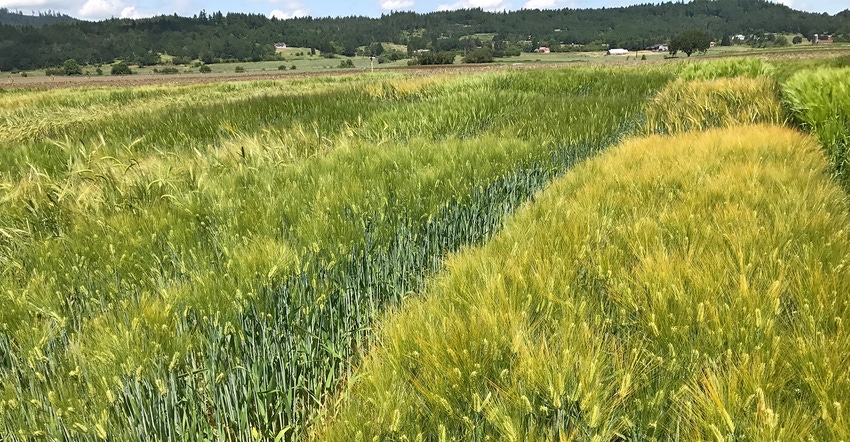February 6, 2018

Plant breeders in five states are hard at work, and they’re going naked. Well, naked in their barley variety choice. Turns out barley usually has a hull, but naked barley varieties allow the seed to be fully threshed from the hull. By aiming for “naked” varieties, breeders see a range of new potential for the crop.
Today, barley is mostly used as animal feed and in beer. But there’s potential in whole-grain baked goods, porridges, grits and cereals that can also be made from barley. This new initiative, with a focus on naked barley, is being led by Pat Hayes, a barley breeder at Oregon State University’s College of Agricultural Sciences. Hayes also founded the OSU Barley Project — also known as Barley World — which includes a team of barley enthusiasts and breeders.
Late in 2017, Western Farmer-Stockman featured a story on other work Hayes is doing on barley flavors that could be used to enhance beer.
To support the project, USDA’s National Institute of Food and Agriculture, through its Organic Research and Extension Initiative, awarded OSU nearly $2 million to lead the project.
Naked barleys seldom used in U.S.
Hayes explains that naked barleys have been around for almost 10,000 years, but they haven’t gained much traction in the United States. “Plant breeders, bakers, chefs, brewers, distillers, animal feeders — we are all united in the goal to provide organic gardeners, growers, processors and consumers with an alternative crop, food, and raw material that will be economically rewarding and sustainable,” he says.
The grain has an optimum level of beta-glucan, a soluble dairy fiber that lowers cholesterol and aids digestion, Hays says. Naked barleys are also easier to process in making food because of their lack of a hull. Beta-glucan is the claim to fame for oatmeal in its role in helping fight cholesterol.
Already, OSU has had some success in naked barley with its Buck variety. This is the first fall-planted naked barley variety to be bred specifically for the Pacific Northwest. OSU is partnering with a Portland, Ore., brewer on an experimental beer malted from the Buck variety. That variety was developed under a prior grant from USDA.
This effort to expand naked barley varieties is just getting underway. Other states partnering are in regions suitable for barley farming, including Washington State University, the University of Wisconsin-Madison, the University of Minnesota and Cornell University.
The NIFA OREI program funds projects that will enhance the ability of producers and processors who have already adopted organic standards to grow and market high-quality organic products. Naked barley has potential for organic producers, but also for conventional production.
Source: Oregon State University
You May Also Like




